Posted on
June 17, 2024 by
The VRG Blog Editor

Whether you live in New York City or are just visiting the Big Apple, you may be thrilled to learn that Spicy Moon restaurant now offers vegan food on the High Line daily 8am to 7pm. The High Line is a public park built on a historic freight rail line elevated above the streets on Manhattan’s West Side. Spicy Moon’s food stand is located not far from the 15th Street entrance to the High Line and offers classic Chinese Szechuan dim sum dishes such as a spicy tofu bun, dan dan noodles, dumplings, and cold sesame noodles. They also sell vegan pastries and desserts along with beverages. We tried their chocolate moon croissant and it was delicious!
For more information on the High Line, see: https://www.thehighline.org/visit/
Category
Uncategorized
Comments
0
Posted on
June 14, 2024 by
The VRG Blog Editor
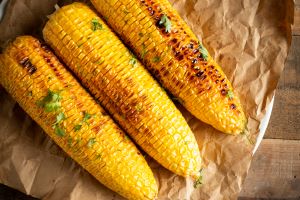
photo from Freepik
Father’s Day is June 16th this year. It’s time to grill vegan-style! Chef Nancy Berkoff offers recipes for Grilled Eggplant, Mediterranean Grilled Portobellos with Pine Nuts, Curried Barbecue Tempeh, Roasted Pepper and Eggplant Dip, Pineapple-Peach Salsa, Japanese Style Grilled Asparagus, Grilled Sweet Peaches, and Roasted Corn.
Read the entire article here: https://www.vrg.org/journal/2002issue3/2002_issue3_gourmet.php
To subscribe to Vegan Journal in the USA, see: https://www.vrg.org/member/2013sv.php
Category
Uncategorized
Comments
0
Posted on
June 14, 2024 by
The VRG Blog Editor

photo from Freepik
Have you ever wondered what the difference is between baking soda and baking powder? Do you know why you might use one or the other or in some cases both in a recipe? Chef Nancy Berkoff, EdD, RD, explains it all in her latest Vegan Cooking Tips column in Vegan Journal.
Read the complete column here: https://www.vrg.org/journal/vj2024issue2/2024_issue2_cooking_tips.php
Subscribe to Vegan Journal in the USA only here: https://www.vrg.org/member/
Category
Uncategorized
Comments
0
Posted on
June 13, 2024 by
The VRG Blog Editor

The Vegetarian Resource Group is once again sponsoring a video contest. We will be awarding several $100 awards. The deadline for entries this year is July 15, 2024.
Create and submit a video relating what you want to tell others about veganism. Some possible topics: food, nutrition, your feelings about veganism and/or vegetarianism, water usage and veganism, veganism and animal rights, or other veggie topics which appeal to you. Humor and feelings are appreciated. All videos should be positive, not be critical of anyone, and not include any footage of animal cruelty. You may submit a video you have already made.
Aspects of judging include accuracy and judges wanting to share the video with others. Entrants give permission to The Vegetarian Resource Group to post and share the video, to link to and from the video, and share the video with the media.
To see the video contest rules, visit: http://www.vrg.org/videoscholarship.php
Previous wining videos can be found here: http://www.vrg.org/veg_videos.php
Category
Uncategorized
Comments
0
Posted on
June 13, 2024 by
The VRG Blog Editor

Each issue of Vegan Journal features people promoting the vegan lifestyle on an ongoing basis. In the latest issue, read about Helene Greenberg who is the founder and Executive Director of VegFest Expos. See: https://www.vrg.org/journal/vj2024issue2/2024_issue2_vegan_action.php
Subscribe to Vegan Journal in the USA only here: https://www.vrg.org/member/
Category
Uncategorized
Comments
0
Posted on
June 12, 2024 by
The VRG Blog Editor
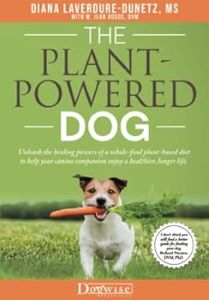
In the latest issue of Vegan Journal, Rissa Miller (former Senior Editor) reviews the book The Plant-Powered Dog. This book will be very useful for those of you with dog companions.
Read the book review here: https://www.vrg.org/journal/vj2024issue2/2024_issue2_book_reviews.php
Subscribe to Vegan Journal in the USA only here: https://www.vrg.org/member/
Category
Uncategorized
Comments
0
Posted on
June 12, 2024 by
The VRG Blog Editor
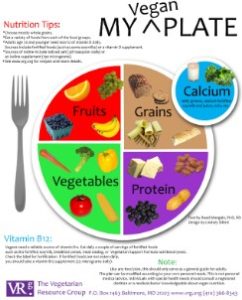
Nothing beats a simple graphic to get the vegan message out! The Vegetarian Resource Group created My Vegan Plate to display on outreach tables at various events. If you live in the United States, you can request copies of this handout to distribute by emailing us at vrg@vrg.org
You can view the handout here: https://www.vrg.org/nutshell/MyVeganPlate.pdf
This same handout can also be read in Spanish here: https://www.vrg.org/images/miplatovegano.jpg
We also have a version you can print out for kids to color on: https://www.vrg.org/nutshell/MyVeganPlateCP.pdf
Donations towards this outreach are always appreciated: www.vrg.org/donate
Category
Uncategorized
Comments
0
Posted on
June 11, 2024 by
The VRG Blog Editor

Be sure to follow The Vegetarian Resource Group on Instagram: @vegetarianresourcegroup
Category
Uncategorized
Comments
0
Posted on
June 11, 2024 by
The VRG Blog Editor
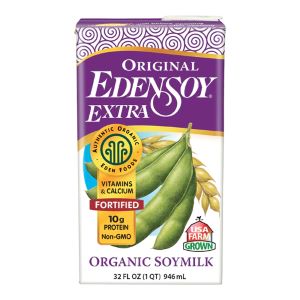
According to VRG’s Nutrition Advisor, Reed Mangels, PhD, RD, there are times when people’s protein needs are higher. For example, in pregnancy, the recommendation for protein is 25 grams higher than it is when someone is not pregnant. That’s an increase of about 50%. Older adults may have higher protein needs than younger adults. Athletes may have somewhat higher protein needs than non-athletes (1). It’s entirely possible to meet protein needs with a vegan diet. Sometimes, choosing a higher protein plant milk can help to meet protein needs.
We’ve identified some higher protein plant milks. Since plant milks are often also used as a source of calcium, vitamin D, and vitamin B12, we’ve included information about whether the milks we identified are fortified with these nutrients.
See the list of higher-protein plant milks here: https://www.vrg.org/journal/vj2024issue2/2024_issue2_higher_protein.php
Subscribe to Vegan Journal in the USA only here: https://www.vrg.org/member/
Category
Uncategorized
Comments
0
Posted on
June 10, 2024 by
The VRG Blog Editor
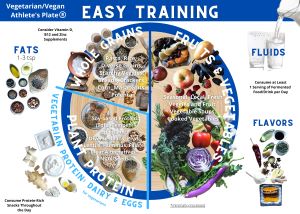
easy training plate
by Reed Mangels, PhD, RD
Eating a healthy diet offers benefits to athletes during training, performance, and recovery. A variety of visual food guides designed for athletes have been developed to help athletes choose a nutritionally adequate diet. Typically, these food guides feature animal-based foods. Since many athletes are vegan, vegetarian, or frequently eat vegan or vegetarian meals, conventional food guides don’t meet their needs.
Surabhi Airi, MS with the University of Colorado, Colorado Springs’ Sport Nutrition Graduate Program in collaboration with the US Olympic Committee’s (USOC) Food and Nutrition Services, developed The Vegan/Vegetarian Athlete’s Plate® as a guide for athletes. This tool helps athletes build meals that meet international sports nutrition recommendations. It features a plate divided into sectors, indicating what proportion of the plate should be devoted to plant proteins, whole grains, fruits, and vegetables during easy, moderate and hard training. For example, during moderate training, approximately a third of the plate should be whole grains, a third plant proteins, and a third vegetables. Seasonal and local fruits can be eaten in addition along with 1 to 2 Tablespoons of fats. Vitamin D, vitamin B12, and zinc supplements should be considered.
The Vegetarian/Vegan Athlete’s Plate® is available for download to be used for educational purposes only:
Easy Vegetarian/Vegan Athlete’s Plate®
Moderate Vegetarian/Vegan Athlete’s Plate®
Hard Vegetarian/Vegan Athlete’s Plate®
To read more about vegan diets for athletes see: Athletes & Vegan/Vegetarian Diets
Category
Uncategorized
Comments
0










